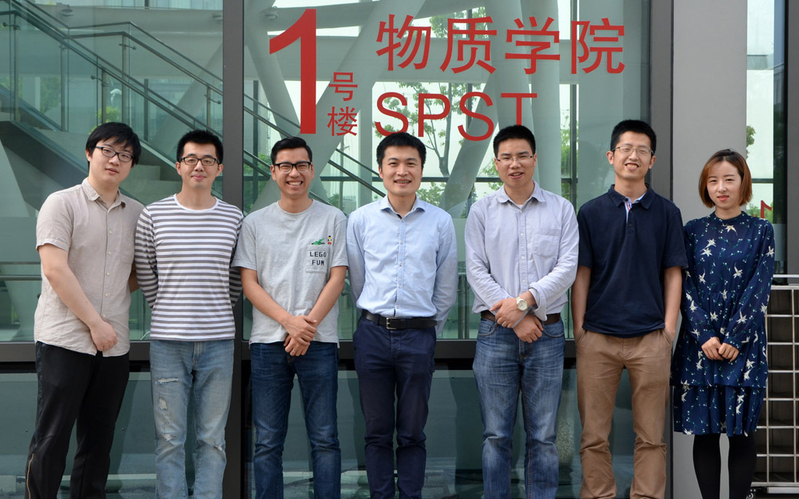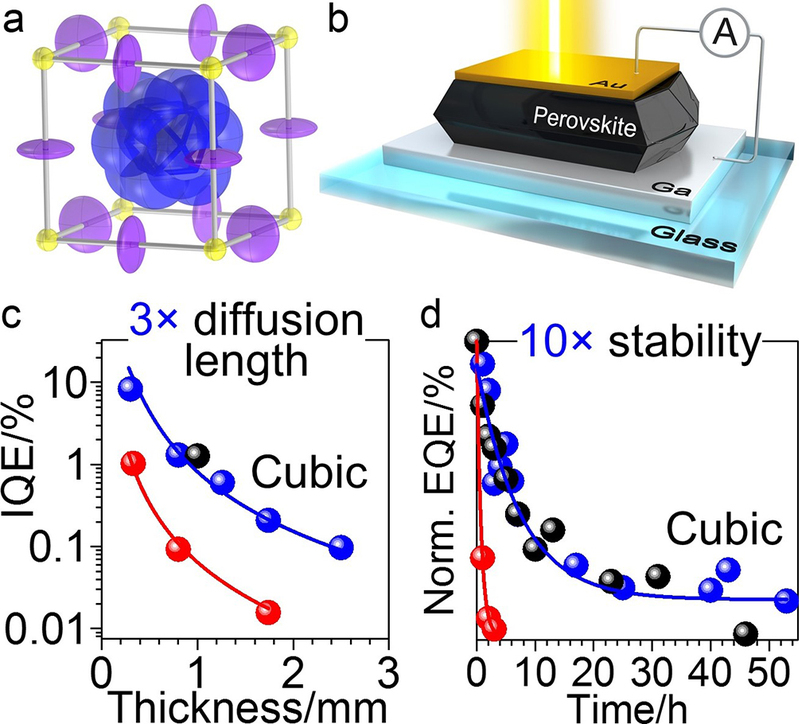In a recent publication in Advanced Materials titled “Symmetrization of the Crystal Lattice of MAPbI3 Boosts the Performance and Stability of Metal–Perovskite Photodiodes,” Professor Qixi Mi’s group from the School of Physical Science and Technology (SPST) report the design of novel perovskite semiconductor materials, and their applications in high-performance and stable photodiode devices.
A new class of semiconductor materials known as perovskites has recently emerged as a dark horse in the field of solar cells. In particular, methylammonium lead triiodide (MAPbI3) is extensively studied for its excellent properties in light absorption and charge transport, but this material is plagued by its poor stability toward moisture. Higher material stabilities and efficiencies are currently the goals in this research area, and world-wide research efforts have gained significant experimental knowledge. However, so far little is known about how to predict and systematically improve the performance and stability of perovskite semiconductor materials.
Based on insights into the structure–property relationship of perovskite semiconductor materials, Professor Mi’s group proposed and experimentally validated a key parameter, termed volume per formula unit (V/Z), for understanding and predicting the properties of perovskites. Guided by this criterion, the group successfully designed and synthesized two types of perovskites, whose experimental crystal structure agree with theoretical prediction. Professor Mi’s Group subsequently fabricated these new materials into photodiode devices, and collaborated with Professor Zhijun Ning’s group to measure their performance. Quantum efficiency (QE) data indicate that the charge-carrier diffusion length of the new perovskites is 115 ± 5 μm, nearly tripled from the MAPbI3 benchmark. The stability against moisture is also improved by an order of magnitude. Initial attempts to fabricate solar cells using the new materials have achieved a power-conversion efficiency of 13%.
This work establishes a methodology for understanding and designing perovskite semiconductor materials, which significantly expands the candidate pool for semiconductor applications. In addition, a new route is paved for fabricating single-crystal perovskite solar cells by estimating the necessary film thicknesses.
Among the contributors to this paper, third-year graduate student Zhifang Shi is the first author and Professors Qixi Mi and Zhijun Ning are both corresponding authors. Professor Jiamin Xue’s group and Dr. Na Yu from SPST Center for Instrumental Analysis also assisted in sample testing and characterization. It is noteworthy that ShanghaiTech SPST is the sole undertaking institution of this publication, and the entire research work has been carried out in SPST, including the design and synthesis of materials, as well as the fabrication and characterization of the devices. This work showcases latest progress in interdisciplinary research in SPST, which crosses and integrates the conventional majors of physics, chemistry, and materials science, and indicates that SPST’s growing capabilities in materials fabrication and characterization has won international recognition.
Patents (CN 105374941 A, CN 105742507 A) are pending for the two new types of perovskite materials. This research project is financially supported by a State Key Research Project from the Ministry of Science and Technology of China, a research grant from the National Science Foundation of China, and start-up funding from ShanghaiTech University.
Read more at: http://onlinelibrary.wiley.com/doi/10.1002/adma.201701656/epdf

Authors of the research paper, from left to right: Yi Zhang, Binghan Li, Zhifang Shi, Qixi Mi, Zhijun Ning, Wenjia Zhou, Chao Cui.

The (a) crystal structure, (b) device architecture, (c) quantum efficiency, and (d) stability data of the high-performance perovskite semiconductor materials.


